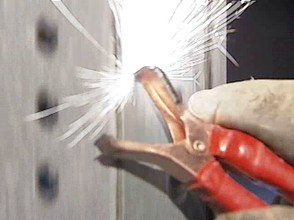Dangers of Stray Voltage
By Jim Taricani
Published: February 24, 2011
 The NB C 10 I-Team reported that a New Jersey power company has identified more than 40 contact voltage locations in Providence, Rhode Island, that could potentially kill people and pets.
The NB C 10 I-Team reported that a New Jersey power company has identified more than 40 contact voltage locations in Providence, Rhode Island, that could potentially kill people and pets.
Contact voltage or stray voltage is voltage on an object that should not be energized such as lamp posts, manholes, gratings and junction boxes as well as sidewalks and adjacent buildings.
David Kalokitis, chief technical officer of Power Survey Co., said a pole located at Elmwood Avenue and Westfield Street gave off 113 volts. The voltage can be deadly to pets and people.
NBC 10's Jim Taricani: "Let me ask you this. It's the summer and someone's standing here barefoot and it was wet. They put their hand on that."
Kalokitis: "Bad news. Wet feet, you got the conductivity there because of the moisture. You put your hand on that, you got the contact to the ground, that's when you get shocked. One hundred thirteen volts, that's line voltage, the same as a wall socket in your house."
Read the full story, and watch the I-Team exclusive broadcast
.